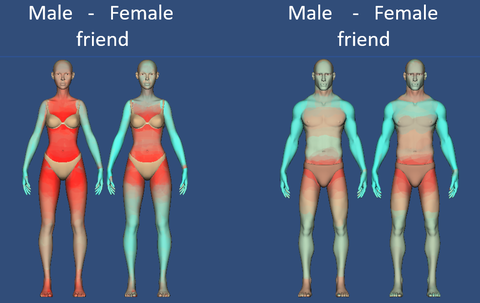May 23, 2025
Adolescence: when everything changes
Physical contact is crucial for early physical, cognitive and emotional development and we now know that it is also important for lifelong psychological well being. From early in life, infants show a fundamental need for closeness to their parents and carers. Affective touch can improve not only social abilities but also learning and cognitive skills more broadly. As we grow up, this affinity for touch follows gender-specific, cultural, ideological and ethical social norms. These norms influence how interpersonal touch is used, when it is perceived as pleasant and how touch is used to facilitate our relationships with others.
In this developmental journey, adolescence is a sensitive period for a person's physical and neurophysiological development: everything changes and reorganises, and creating bonds with others can be difficult. The role of touch in one’s personal and social life is something kids and teens may not be used to reflect on or talk about at that age, but a better understanding of this fundamental means of social connection and communication can help their psychophysical and social well-being.
We started a collaboration with Leipzig International School to open a window on how adolescents experience touch in everyday life, for them to get some extra tools to understand themselves, and to contribute to the collective knowledge of the role of touch in adolescence.
Using the HandsOn App, we asked students to try different exercises to understand “When, and by whom, and where is it most pleasant to be touched?”. They painted heatmaps of full-body avatars, indicating the body zones that they find soothing/unpleasant to be touched by family or friends, a female or male friend. We also investigated to what extent their relationship to touch is related to their awareness of the bodily responses to emotions, and the amount and quality of support they perceive within their social network. For this, students responded to a series of surveys about their relationships with peers and family members.
Results show that social touch is overall more pleasant from family than friends and to social (e.g., hands and arms) compared to intimate body zones (e.g., torso and upper legs). Notably, girls and boys present different trends of attitudes toward touch from friends. While male adolescents, compared to younger children, show an increased craving for social touch, female adolescents report an increased dislike for touch, especially to intimate body zones and from male friends. Students who like social touch to a greater extent also present higher awareness for the bodily correlates of emotions, and report to rely on stronger support from their social network.
Our findings underscore the nuanced nature of social touch experiences among adolescents, shedding light on its subjective nature and varying preferences based on factors such as gender, age, and relationship dynamics. Beyond contributing to our understanding of interpersonal touch, these results hold significant implications for both education and health. In educational settings, recognizing and respecting individual preferences for social touch can foster a more inclusive and supportive environment. In the realm of health and prevention, interpersonal touch can serve as a catalyst for heightened self- and body awareness, as well as a potent tool for emotion recognition and management. Ultimately, this can help adolescents’ Social and Emotional Competences and learning, playing a crucial role in building healthy relationships.

